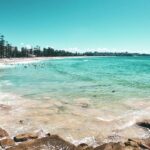Beneath the palm-lined streets and coastal towns lie centuries-old landmarks that have witnessed conquest, trade, rebellion, and reinvention. The historical places in Florida reflect a blend of Native cultures, Spanish influence, Civil War legacies, and early American ambition. These are not relics behind glass, they are forts still facing the sea, gardens shaped by visionaries and estates that once housed empires of citrus and circus. The historical places in Florida are layered with stories that shaped both the state and the nation, making them essential stops for travellers with curiosity and care.
Top 10 Historical Places In Florida To Discover
From ancient coquina forts to preserved mansions and archaeological ruins, the historical places in Florida offer a rare chance to walk through real American history.
1. Castillo De San Marcos (St. Augustine)
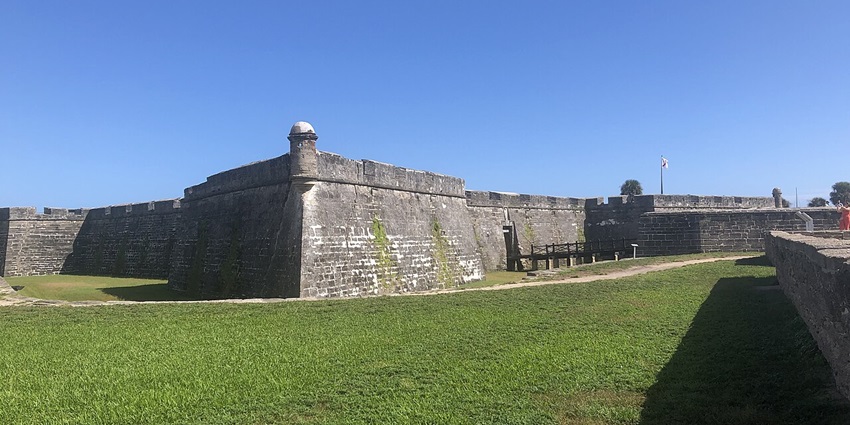
Photo: Jmelloni252 / Wikimedia Commons
The Castillo de San Marcos was built by the Spanish in the late seventeenth century to guard their colony at St. Augustine. It was sourced locally and turned out to be incredibly durable during attacks, as cannonballs would sink into the walls instead of causing major damage. The fort is shaped like a four-pointed star. This shape gave soldiers better control over every angle of the shoreline. You can walk through rooms once used for supplies, guard duties, and prisoners. Over the years, it flew several flags: Spanish, British, Confederate, and American.
How To Reach: Easily accessible by car or trolley tours.
Cost: $15 for adults; free for children under 15.
Timings: 9 AM – 5 PM.
Nearby Attractions: St. George Street, Colonial Quarter, Lightner Museum.
2. Fort Zachary Taylor Historic State Park (Key West)
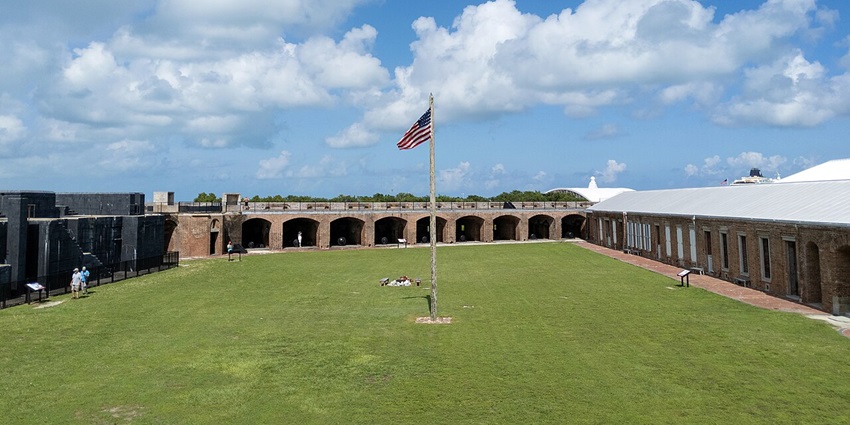
Photo: RuggyBearLA / Wikimedia Commons
Fort Zachary Taylor played a critical role in Florida’s military history during both the Civil War and the Spanish-American War. Construction began in the mid-1800s, with the fort completed using thousands of bricks shipped from New York. At the time, it was the largest masonry fort in the country. Its position along the Straits of Florida gave it strategic control over shipping lanes, and it once held the largest collection of Civil War cannons in the United States. It’s not only one of the most visually striking historical places in Florida also one of the few where you can explore military architecture.
How To Reach: Drive or bike from Old Town Key West; parking is available inside the park.
Cost: $6 per vehicle plus $0.50 per person.
Timings: 8 AM to 4 PM.
Nearby Attractions: Southernmost Point, Ernest Hemingway Home, Key West Lighthouse.
3. Vizcaya Museum And Gardens (Miami)
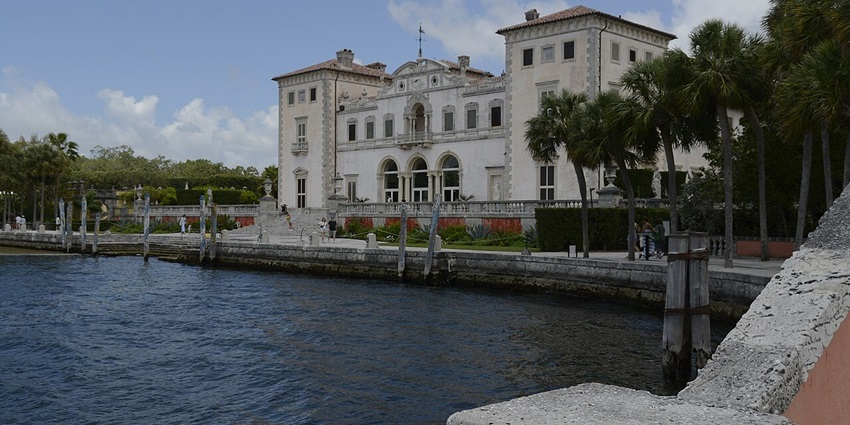
Photo: Leslie Platt / Wikimedia Commons
Vizcaya Museum and Gardens was once the private winter estate of James Deering, a wealthy industrialist from Chicago. Completed in 1916, the mansion was inspired by Italian Renaissance villas, with every detail from marble floors to carved ceilings brought together by European craftsmen. The estate includes more than 30 furnished rooms, each filled with antiques, tapestries, and artwork dating back centuries. Vizcaya is unique among the many historical places in Florida because of the combination of Old World elegance and subtropical surroundings. Sculpted hedges, coral stone fountains, and waterfront terraces stretch across ten acres.
How To Reach: About 10 minutes by car from Downtown Miami; Metrorail Vizcaya Station is nearby.
Cost: $25 for adults, $10 for children 6-12.
Timings: 9.30 AM – 4.30 PM (Wednesday to Monday)
Nearby Attractions: Coconut Grove, Brickell, The Barnacle Historic State Park.
4. Fort Jefferson (Dry Tortugas National Park)
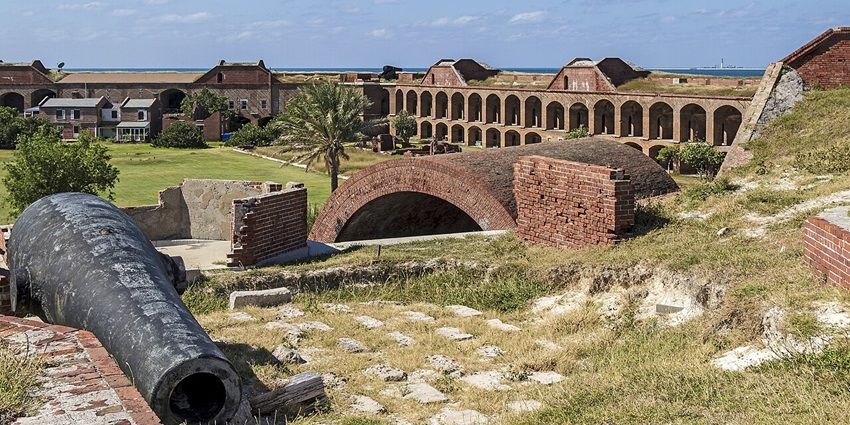
Photo: Acroterion / Wikimedia Commons
Fort Jefferson is one of the remote and extraordinary historical places in Florida. Construction began in 1846, and although it was never fully completed, the hexagonal fort became the largest brick masonry structure in the Americas, built with over 16 million bricks. It was intended to protect one of the most important deepwater anchorages in the Gulf of Mexico. The fort was also used during the Civil War and later as a military prison. Its most famous prisoner was Dr. Samuel Mudd, who treated John Wilkes Booth after the assassination of President Lincoln.
How To Reach: Accessible only by ferry, seaplane, or private boat from Key West.
Cost: $15 park entrance; ferry packages start from $200.
Timings: Ferry tours depart early morning; day-trips return by late afternoon.
Nearby Attractions: Snorkelling reefs, Loggerhead Key, Garden Key beaches.
5. The Ringling (Sarasota)
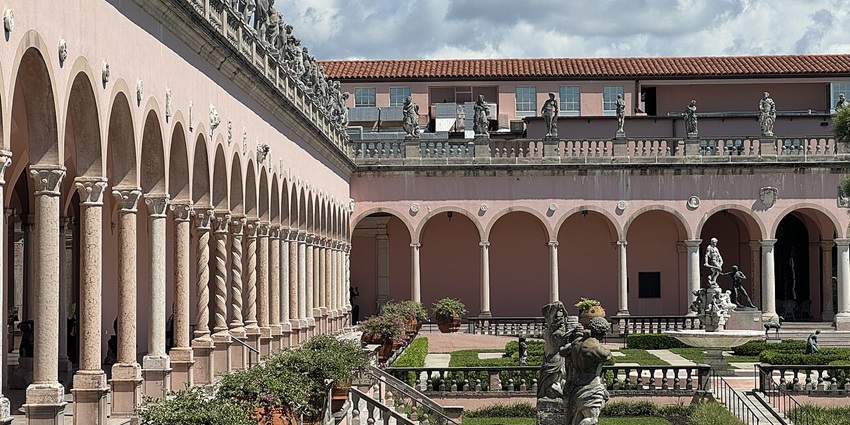
Photo: Eekelley23 / Wikimedia Commons
In Sarasota, a quiet stretch along the bay holds a place built on ambition, art, and spectacle. During the 1920s, John Ringling, whose name was already known across the country thanks to the circus empire he helped create, chose this coastal town to build something lasting. It’s a cultural landmark made up of a waterfront mansion, two museums, and manicured grounds. The mansion, named Ca’ d’Zan, was shaped by Ringling’s travels through Venice. Inside the art museum, works by European masters like Rubens and Velázquez line the walls of rooms styled after classical galleries.
How To Reach: Located off U.S. 41/Tamiami Trail; free parking available on site.
Cost: $25 for museum and grounds; $5 for children.
Timings: 10 AM – 5 PM.
Nearby Attractions: Ca’ d’Zan Mansion, Sarasota Jungle Gardens, Mote Marine Laboratory.
6. Kingsley Plantation (Jacksonville)
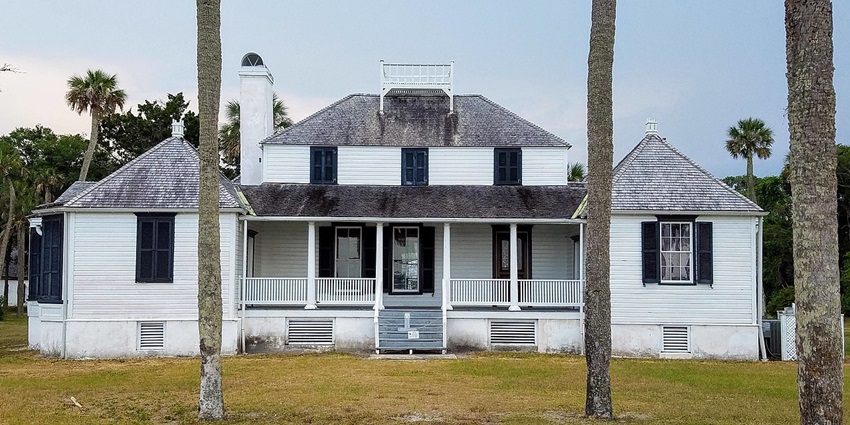
Photo: Upstateherd / Wikimedia Commons
Kingsley Plantation sits along the Fort George River and is one of the oldest surviving plantation homes in Florida. What makes this site stand apart from other historical places in Florida is the preserved layout of the entire plantation, including the original owner’s house, kitchen, barn, and, most importantly, the remains of 25 tabby slave cabins arranged in a semicircle. These structures, made from oyster shell concrete, give a haunting and necessary look into the lives of the enslaved people who kept the plantation running.
How To Reach: Located inside the Timucuan Preserve; best reached by car.
Timings: 9 AM – 5 PM (Wednesday to Sunday)
Nearby Attractions: Fort Caroline, Big Talbot Island State Park, Ribault Club.
7. Ponce De León’s Fountain Of Youth Archaeological Park (St. Augustine)
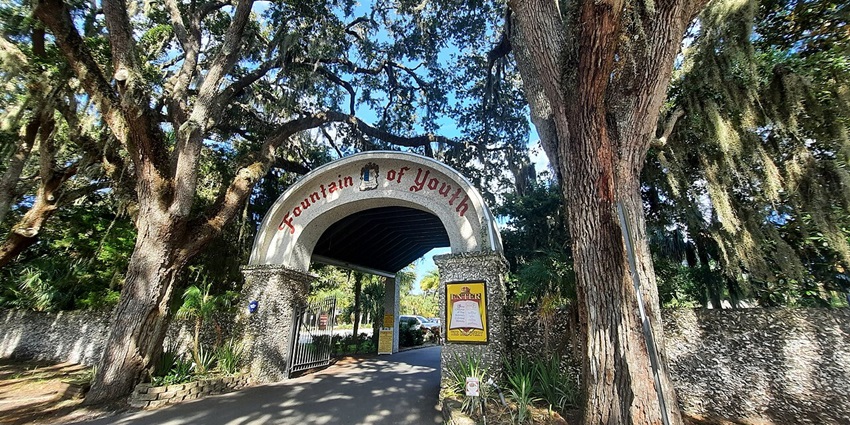
Photo: _Explanders / Wikimedia Commons
Set along the shoreline of St. Augustine, this park is a key site linked to the earliest European exploration in what would become the United States. It marks the spot where Spanish explorer Juan Ponce de León is believed to have landed in 1513, for freshwater sources that later inspired legends of a life-extending spring. Over the years, archaeological digs on the site uncovered evidence of the original Timucua village and early Spanish settlement, making it one of the most layered historical places in Florida.
How To Reach: Walkable from central St. Augustine; ample parking available.
Cost: $19.95 for adults, $9.95 for children.
Timings: 9 AM – 6 PM.
Nearby Attractions: Old Jail Museum, Castillo de San Marcos, Mission Nombre de Dios.
8. Florida Historic Capitol Museum (Tallahassee)
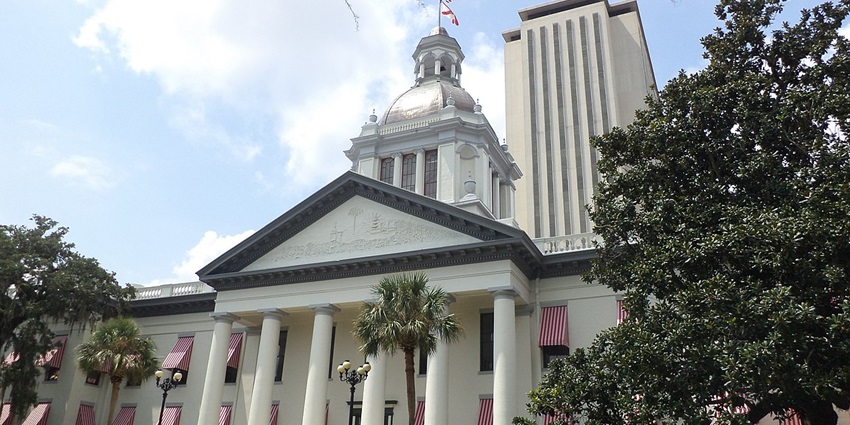
Photo: Michael Rivera / Wikimedia Commons
Standing at the centre of Tallahassee with its white columns and red-striped dome, the Florida Historic Capitol Museum offers a window into the state’s political evolution. The building served as Florida’s capital for more than a century, after the new capital complex was built behind it. Inside, you’ll find the original House and Senate chambers, the Governor’s suite, and the Supreme Court, each room arranged as it would have looked over a hundred years ago.
How To Reach: Located downtown near Monroe Street; buses and public transport are available.
Timings: 9 AM – 4.30 PM (Monday to Friday) ; 10 AM – 4.30 PM (Saturday).
Nearby Attractions: Florida State Capitol, Cascades Park, Museum of Florida History.
9. Bok Tower Gardens (Lake Wales)
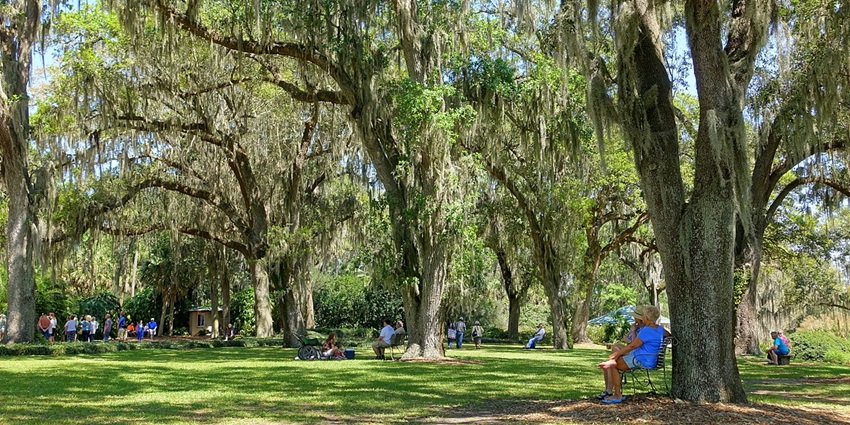
Photo: Daderot / Wikimedia Commons
Bok Tower Gardens was created in the 1920s by Edward W. Bok, a Dutch-American publisher who wanted to leave a peaceful, public space as a gift to the people. What makes this site stand out among other historical places in Florida is its mix of landscape architecture, music, and Art Deco design. The centrepiece is the 205-foot Singing Tower, made of pink marble and coquina stone. It houses a carillon, an instrument with 60 bells that still rings out during daily concerts. The gardens were designed by Frederick Law Olmsted Jr., son of the man behind New York’s Central Park.
How To Reach: Accessible via US-27; car travel is most convenient.
Cost: $17 for adults, $5 for children.
Timings: 8 AM – 6 PM daily.
Nearby Attractions: Pinewood Estate, Spook Hill, Lake Kissimmee State Park.
10. De Soto National Memorial (Bradenton)
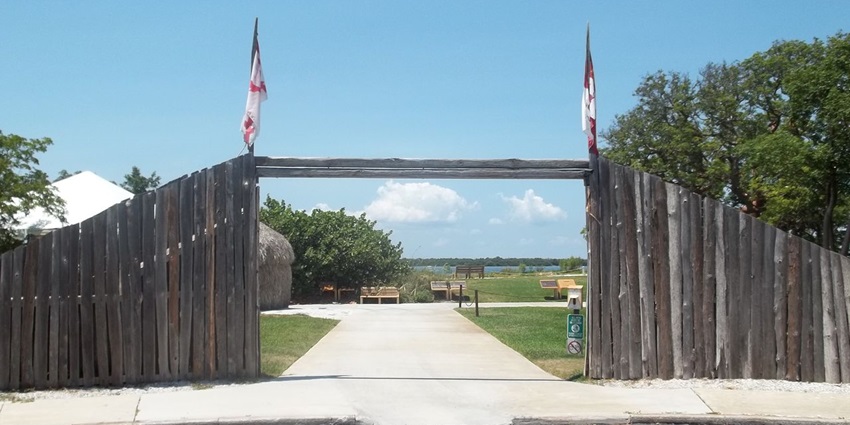
Photo: Ebyabe / Wikimedia Commons
In 1539, Hernando de Soto came ashore on the west coast of Florida, near what is now Bradenton. The landing site is preserved today as the De Soto National Memorial. This peaceful stretch of shoreline was the beginning of a long and brutal expedition that crossed through the American Southeast. Unlike many other historical places in Florida, this one looks directly at the cost of early colonisation. The memorial grounds include a shaded walking trail that runs along the Manatee River. There’s a seasonal living history area with a recreated 1500s camp, where interpreters demonstrate how soldiers and crew lived during the expedition.
How To Reach: Located west of Bradenton, off 75th Street NW; free parking on site.
Timings: Daily, 9 AM – 5 PM.
Nearby Attractions: Robinson Preserve, Palma Sola Botanical Park, Manatee Village Historical Park.
Across Florida, history lives in the details: a limestone wall that once held off invaders, a marble tower that still plays music across orange groves. Travelling through the historical places in Florida means paying attention to what still stands and why it matters. Some sites are grand, others are understated, but each holds a story worth hearing. Explore more such packages offered by TripXL and check out destinations from your bucket list.
Cover Photo: Jesselikeswx / Wikimedia Commons


 WhatsApp
WhatsApp
 Twitter
Twitter

